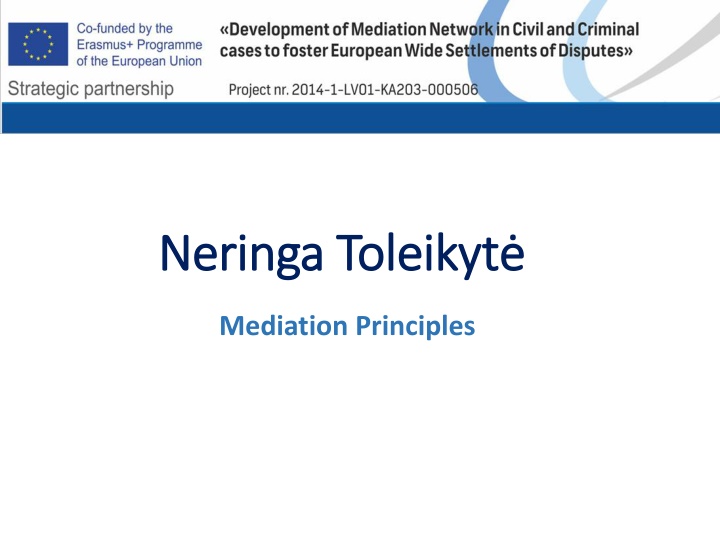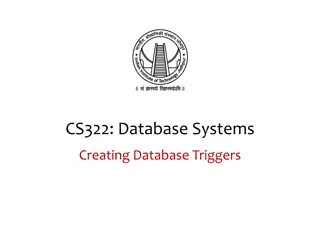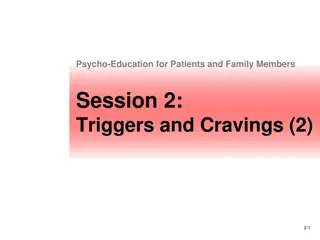Triggers and Cravings: Understanding Addiction
Changes in the brain related to addiction, conditioning mechanisms, behaviors characterized by drug addiction, the definition of addiction as a chronic disease, and the addictive process across different phases are explored to deepen awareness and knowledge on triggers and cravings.
Download Presentation

Please find below an Image/Link to download the presentation.
The content on the website is provided AS IS for your information and personal use only. It may not be sold, licensed, or shared on other websites without obtaining consent from the author.If you encounter any issues during the download, it is possible that the publisher has removed the file from their server.
You are allowed to download the files provided on this website for personal or commercial use, subject to the condition that they are used lawfully. All files are the property of their respective owners.
The content on the website is provided AS IS for your information and personal use only. It may not be sold, licensed, or shared on other websites without obtaining consent from the author.
E N D
Presentation Transcript
Neringa Toleikyt Neringa Toleikyt Mediation Principles
The goal of mediation The goal of mediation is to reach a solution that is mutually acceptable to all concerned parties and this process is based on special principles which are essential for forging agreed and binding solution.
The mediator, in contrast to the arbitration or judge, has no power to impose an outcome on disputing parties, instead he or she tries to reach a resolution of a particular conflict through various tactics, strategies and methods that further dialogue, discussion, concession, understanding between the disputants. compensation and
The key principles of mediation are the following: 1. Principle of Freedom or Private Autonomy. 2. Principle of Confidentiality. 3. Principle of Cooperation. 4. Principle of Neutrality. 5. Equality of Parties.
Important! the rules of mediation and its principles should be carefully explained in the beginning of the mediation process
Principle of Freedom or Private Autonomy parties will play a major role in mediation the process and the agreements reached are solely guided by the will of the parties participants and the mediator are always free to withdraw
Principle of Confidentiality and Neutrality what is said or written during the proceeding of mediation can not be used in later, possible court proceedings. relations between a party and a mediator, a mediator and a judge (in charge of the matter), and in relation to the public, or social control reasonable expectations of the parties with regard to confidentiality
Principle of Cooperation to participate in good faith and cooperate the parties have to be willing to allow a neutral third party to help them to reach a acceptable agreement mediator should encourage both parties in the dispute to understand the other person s perspective
Principle of Neutrality mediator must conduct the mediation in an impartial and neutral manner mediator should not give advice or suggesting solutions mediators must remain neutral as to the outcome of a mediation at all times neutrality or impartiality of a mediator should ensure that the parties accept mediator as a person who is sincerely dedicated to resolving the dispute
Equality of Parties each party has equal opportunities to participate in mediation the parties must be must be properly represented when it is needed
Thank You! Neringa Toleikyt Vilnius University Faculty of Law neringa.toleikyte@gmail.com +370 614 24694 Vilnius, Lithuania























